Art and Mental Health Link Love
Your weekly digest of this week's things I loved on Substack that I wanted to say a little bit more about ...
Friday digests are back after a December break!
In case you’ve forgotten or are new here, what I’m doing here on Substack is creating a comprehensive online library of resources about the complex relationship between art and mental health.
QUICKLY:
Play my Choose Your Own Create Me Free Adventure if you haven’t yet
Check out my post inviting collaboration in 2024
I explore and celebrate art as therapy but also want us all to talk about the shadow side - how mental health symptoms impact creative process, content, medium, productivity, self-perception/identity and how art and mental health both get complicated by stigma, money/business, and more. I believe that this is an important conversation that we aren’t having enough and that by devoting my time to developing a library here, we can all better understand it. And I believe that increased understanding leads to a world where writers, artists, and creatives of all kinds can achieve holistic wellness - financial, creative, physical, mental, social … Art does heal individuals and communities. Shining a light on the shadow side helps us find solutions so that we can further magnify the beautiful parts of creating art.
This work only continues to the end of 2024 if enough paid subscriptions support it.
On Fridays, I share excerpts, links, and ideas related to this topic that are created by other Substack writers doing amazing work here. Learn more about why I do this in the way that I do it right here. In short, it adds to our understanding of the relationship while also creating community around the topic.
Reminder: I draw connections between what the writers are sharing and my understanding of how that relates to art + mental health but this doesn’t mean that the original writer intended that or agrees with it in full or part … I always encourage you to go read the full pieces whose snippets capture your attention here to find out what the writer’s piece intends and offers.
Grounding Us As We Begin
I want to begin by sharing a portion from a beautiful piece by of :
“We find ourselves tethered to stringent hours, grappling with more than one job, navigating the demands of bills and taxes, ensnared in a totalitarian machine that compels us to serve systems intent on eroding our spirits and creativity.
And because we live on Earth, your pain is my pain. Your joy is my joy. Together, we are Earth.
And because we are Earth, we still have the time to reimagine the world. We still have the time to dream of what's possible, to awaken our radical creativity, and to defy the systems that strip away our dreams.”
Her piece digs deep into the opposing forces that we exist within in this world, honors the tragedies many creatures on this planet are facing, and still shines a light of hope. It is a place I want to return to again and again.
And I want to add this from her same piece:
Don't we all carry within us thousands of untold stories and one? Each of us a book, or two, or three. Some stories will be shared, while other parts of us may remain unseen, misunderstood, or unheard by others. The complexity of our narratives adds a unique layer to the human experience.
From the past week or so then …
Mental Health and Creative Process
of asked Are You Ready to Put Yourself Out There?
Sharing how she did so here on Substack despite anxiety … There’s a lot of richness in this piece around staying in and leaving our comfort zones and how age might impact our choices around risk and vulnerability. She writes about how many partially-written books she has on her computer and says:
“Collectively, I have spent years on them all. And yet I have nothing to show for it. If I had stuck to one idea and seen it through I would have a book by now. I might have had some success. I might also have had some failure. Either way I would have won because I’d have been moving forward with my life. Instead I have wasted the last few years residing in the space between uncertainty and hope. It fees like a safe space, for whilst something’s still a an idea you can never fail, right? But it’s a dangerous place for your soul.
Maybe this is you- preferring to rest in the safety of the research stage of a new project. Or better still, preferring to stay in the research stage of multiple projects. It is the most perfect place of avoidance: purpose without pressure.”
I would first argue that it isn’t true that she doesn’t have anything to show for it and that none of it is wasted. Personally, the way I keep moving forward in my work is to see it all as a huge body of work where it all matters because it’s all part of the process to completing that body of work. In hard times, I imagine a posthumous discovery of this body of work … where someone would find, if I were Farrah, those half completed documents on the computer and bring them into the light and someone would find magic in them just the way that they are.
But I also acknowledge that her own experience of that being wasted time is valid and real also. That being stuck in the research phase or procrastinating project is common among people with anxiety, people afraid for whatever reason to face criticism, people afraid of both success and failure (which means a lot of us people). One of the things I’ve learned about anxiety is that the only real way to make it better is to do the thing you’re anxious about anyway. (There are exceptions, there are sometimes important parameters needed in place to titrate the experience, but generally speaking, this is the case.) And that’s what Farrah did:
“Over time I realised what I really wanted to do, what I had always wanted to do was create my own community rather than an audience. I wanted to write about the things that interested me, a sort of live autobiography of sorts. But oh God, was I fraught with anxiety. The anxiety that no one, and I mean no one, would subscribe. The anxiety of putting my most personal writing on the Internet. The anxiety that old colleagues would cringe. Or laugh. Or think I was completely bat shit for doing such a thing after a relatively distinguished career in magazines.
And yet, in spite of all that I did it.”
How can you find a way to acknowledge the fears and anxieties and move forward anyway? It’ll be different for everyone. Having spent a decade researching craft as therapy (specifically crochet), I have found that one way of doing that is practicing in small ways. Learn over and over again that you can be imperfect in crochet and nothing bad happens and then it teaches you that you can take other bigger risks. In a reference to something else in Farrah’s post - get the weird, edgy haircut; you might love it or hate it but either way the hair grows back - then remember that you can try other things, too.
RELATED: of shared:
“Back to the topic of desire—both the kind that propels a story forward, and the kind that propels us forward. We could speak all day and night about desire, because most of us have gone to—go to—such great lengths to protect ourselves from the fullness of its sensation (and are so good at deceiving ourselves about the nature of our truest desires). This distancing and deceit impedes our art, without question. In art, the closer we get to ourselves, the better. In art, the more we feel, the better. In art, the truth of our desires is our guiding star.”
of shared Beginning Again
which is about the anxiety, fear, procrastination, impostor syndrome that can make it hard for us to get back to creativity after a break …
“After a period like this where I have been away from the studio or in a fallow period of creativity, I feel very much like a beginner, and it is often difficult to find my bearings again in my work. That is the truth of the creative process, the ebbs and flows that are part of life as an artist. There are times when life interrupts our creative flow or when, no matter how hard you try, nothing good seems to happen at the easel. There’s anxiety, boredom and self-doubt that are constant intruders in the studio, who’s voices need to be ignored or overcome that can inhibit us from even getting started. I ask myself questions about the worth of the work that I am doing and often feel like an imposter. I imagine that I am not alone in this thinking.”
But more than this, it’s about remembering that there are always breaks, ebbs and and flows, and that feeling like a beginner again in creativity actually is the point.
One of the things I like about my own creativity as I age is that this point about being a beginner again is both true and not true. It is true that I am starting over or trying something new or trying the same thing a new way, that playing and being a beginner is this magical thing. But it’s also true that I have years of ebbs and flows behind me and that means that deep inside, despite all the fears that arise, I already know, “I can do this. I do this. This is what I do.”
of shared Embracing Authenticity
which is a book review in the form of three takeaways that relate to Eric’s own journey through career and art.
“The ego, often loud and demanding, seeks immediate gratification and recognition, while the Self is our true essence, seeking fulfillment and purpose.
In my life, this battle manifested in various ways. My pursuit of a careers in marketing, design, and tech; completing my bachelors degree; my journey as an artist; and my exploration into different artistic mediums – all these paths were influenced by this internal conflict. The ego pushed me toward external validations, like money, the halo effect, certificates, degrees and a hunger for creative recognition. In contrast, my Self yearned for authentic expression and meaningful connection through art.
This led me to a crucial realization: the importance of aligning my actions with my true Self. It meant recognizing when the ego was steering my decisions and gently redirecting my focus towards what genuinely resonated with my inner values and passions.”
I don’t always frame things in the ego/self model myself but it can be a helpful way to help us understand what’s really driving us. Another way of phrasing is it the tension between the head and the heart. When the head takes too much control, it can creatively affect our he(ART).
Mental Health and Creative Medium
of shared in Experimenting Through Doodles:
“But whatever the medium, it has to suit the story.
I think ink could work well for the old-timey, fairy tale mystery vibes of Wulfrun, I just need to sort out the best way to tackle it - will washes be too busy? Should the ink be black? Or is there a better colour for this? Should I stick to just line art, maybe try crosshatching for shading? And that’s even before considering character design and background and the specifics of the story.
It’s overwhelming to think about. Especially since no one is making me do this but me….
Nevertheless! When a project is overwhelming, I try to find the easiest way in.”
Which I think speaks to how going to whatever your go to medium is can be a way to stop overthinking and then you can always move forward differently from there.
of shared oNt tsrat hte ewke
written entirely like this:
“uBt htsee adsy I errgte ym alixyt ni hte erlam fo ekbyaodrnig kslisl, ebacsue fo hte isuttaoin ni hwcih I ifdn ymesfl. nI a unstehll ti si htsi: I acn ytep afts iwhtuot ebnig caucaret, ro I acn ytep caucaretyl iwhtuot ebnig afts. tI osnusd ilek a oJnhosinna ro iWdlaen paohirms, ubt htsi si ym ilef. A omemtn ro wto fo ocmmsiretaoin no oyru aptr owlud ont ocem masis, fi oyu odn’t imdn ym asiygn os.”
Which I believe translates to:
But these days I regret my laxity in the realm of keyboarding skills, because of the situation in which I find myself. In a nutshell it is this: I can type fast without being accurate, or I can type accurately without being fast. It sounds like a Johannina or Walden paradox, but this is my life. A moment or two of commiseration on your part would not come amiss, if you don’t mind my saying so.
And I’m not sure what I want to say about it but it delighted me to “read” this and to look at it as its own art form and to consider the implications related to nuerodiversity and dyslexia and those people who can’t read for various reasons and how all of that, as well as simply a lack of proficiency with a particular form of technology, might impact what and how we create.
Mental Health and Creative Productivity
SEEKING YOUR INPUT: I’m really seeking a better word than “productivity” for this because that has so many layered connotations. I’m trying to express that our mental health symptoms often affect how much and often we create separate from how much we might want to. Any thoughts on a better word?
of wrote Starting to Garden
in which she shared her experiences of trying to be a perfect gardener, a perfect human, with a perfectly crossed off to do list in this very imperfect world and how gardening is a place where she learned to take things slowly and approach creativity in a new way:
“I have tried learning many new creative skills as an adult, and have succeeded at a few (which I would tell you about proudly,) and have failed at most (which I block from memory as much as I can). All of them I have invariably pursued in fits of urgency and a flurry of to-do lists and not a small dose of misery. I would be a great hobby pianist, guitarist, poet, entrepreneur, yogi, speaker of Spanish, singer, storyteller. I just had to get the right app and the right schedule and the gumption to push through. The garden is the one that fully stopped me in my efficient tracks. Starting to garden could not be, as I wanted, a large, sweeping overhaul of myself and my plot of land. It was rather the little daily moves I could make to great effect, the few plantings or clippings that, left for a year or three, yield fruits or notable shapes or a new patch of sun or shade that I wanted, or, in the best cases, a delightful surprise.”
We have perfectionist tendencies for all kinds of different reasons and we often believe that the right app/schedule/whatever is the answer but often the answer is to allow for imperfection. I find that craft and art are terrific places to practice this so that then we can allow them in other areas of life as well.
of shared 7 Things I (Almost) Learned Last Year
which reminds us to embrace/accept the lowlights, not just the highlights:
“2023 did not go according to plan (that is, when I bothered to make plans, which I rarely did, as I was often too afraid). I crushed zero goals. On the work front, I pitched less and shied away from big projects I didn’t have the bandwidth for. As a result, this was the lowest earning year I’ve ever had. I ended December with fewer subscribers than I had going into it. C’est la vie.
I share this not to whine or garner sympathy, but in an attempt to normalize downturns. Despite what the collective highlight reel would have us believe, the graph — of productivity, contentment, healing, achievement, wisdom, what-have-you — does not trend ever upward. And that is okay.
The low notes aren’t fun, but they are part of any venture, including that big one called Life. As the highlight reels and “best of” lists reign supreme, remember there are no highlights without everything that falls beneath them.”
of shared Why I Have to Write My Story
about listening to the message in Big Magic by
and working to move forward with her memoir …“Fear has stopped me from writing. The oppressive voice of the perfectionist, the imposter syndrome, the crippling anxiety that I can’t do it—as in write my memoir. I can’t tell the story well enough. It won’t be good enough, and I’m not good enough at writing.
This perhaps may seem funny because, after all, I pound out these newsletter posts pretty regularly and without much effort and thought into them. I am blessed to read and write very quickly.
It’s a mental hurdle, undoubtedly. But when it comes to putting the stories all together in my memoir, I’ve faced a mental hurdle, imposed upon my own self.
But I have to do this. Why? Because since I haven’t, as I don’t, it still continues to haunts me.”
It’s a great piece about how we need stories, especially survivor stories. Each one of us has a unique particular story to tell and we can tell it and sometimes must tell it. Or it will keep haunting us and then we won’t be able to create much of anything anyway because it’s all circling back to that.
Mental Health and Creative Identity/Self-Perception
of wrote The aesthetic subcultures and the floating world
which is a mesmerizing piece about different subcultures, noticeable in large part by their fashion choices, but really fascinating when looked at through a lens of social criticism.
"Dark academia is not an aesthetic of outward-facing social protest motivated and fueled by despair. Dark academia actually represents a denial of the angsty doomism favored by goth; instead of weeping over a meaningless world, dark academia seeks to return, in the mind at least, to a world that didn’t seem to have lost its meaning yet.
… Dark academia considers the difficulties of the world to be beneath notice, something only the plebes would care about anyway; and with those clothes on you know they won’t be working with their hands or otherwise needing to earn their living. They will stay in their hallowed halls of learning, and they will study, pushing themselves ever forward and onward, ever more rigorously, toward a fuller engagement with the life of the mind.
… However, the people involved in dark academia can themselves forget the point of the aesthetic; they can get so wrapped up in the pursuit of it that they forget their aesthetic is meant as a reproach to the culture’s habits of easy subjectivity; they can begin to see reading, study, the hallowed halls, and all the rest as a particular set of accoutrements to the good life.”
That last point is true about so many subcultures and groups and even in self-definitions … we can get so wrapped up in the ways we define ourselves, internally or externally, that we become a narrow slice of what we really are all about.
How Art Heals
Angie of @Angie’s Substack is sharing daily slow starts of inspiration
which each explore holistic wellness in ways that I find inspiring, particularly as they align with my word of the year. On Day 2, she shared Doodle Forest: Where Imagination Blooms, which says in part:
“Your hand moves with ease, and you can feel the tension melting away with each stroke. Like a forest stroll, Doodling is a gentle exercise that promotes relaxation and relieves stress.
With every doodle, you express your emotions without words. It's like the forest, where each tree silently conveys its story. Doodling provides an outlet for your feelings and a chance to find balance.”
I started doodling in sort of a zentangle fashion at the end of the semester, something I hadn’t done in ages, and I’ve been finding it so beneficial. Do you doodle?
RELATED: of is doing 30 days of drawing/doodling prompts
And shared in Day 3:
“Inspiration for today’s doodle comes from two artists/activists: Keith Haring and Friedensreich Hundertwasser. Both artists worked with lines and icons, and used repeating patterns in their work. Some might say, they DOODLED.
They also both addressed issues that they cared about within the drawing they created. In a way, they used their drawing practice to manifest more of what they wanted to see in the world. This is similar to what we’re going to do today… so let’s take a quick peek at these two artists work and lives for inspiration.”
shared a guest post over at (which is by on Finding Joy in 2024
and highlights a daily writing practice she’s been doing since 2017, sharing the three good things that happened in the day:
“Through this practice, I have also learned the art of cognitive reframing. Because I am committed to writing a list of my particularly good things each day, I sometimes have to find joy on horrible, no good, very bad days. These days are hard — the day our dog died, the day I lost my most important writing notebook, the day my son’s best friend since childhood died unexpectedly from an illness at age 20. Even on those days I find a small thing (or three) to appreciate, to recognize as good even among the bad. I have learned to do the work of recognizing my own bad moods and negative thought patterns. With this awareness, I can work to reframe the negativity, to pull out of a negative thought spiral, to give myself the gift of something positive to focus on. I’m not perfect at this, I still get stuck at times, but it’s not as hard anymore.”
She notes that she has never stuck with a daily journal or similar things but has found this specific practice to be something that sticks, that works, that betters her life again and again.
When Art Harms/ Hinders/ Is Complicated
As I’ve explained, I use the terms “art” and “mental health” really broadly, and this week I have a couple of passages that don’t fit neatly into this category but also make a lot of sense to me to share here:
of called What more do they want from a Speller?
which comes from her section called Aidan’s Communication Journey, described as: “An Aidan-led exploration into what works, what doesn't, and helping my son to acquire what he feels to be the best way for him to communicate with the world.” If you aren’t familiar with this, it’s all about her journey to help her nonspeaking autistic son be exactly himself in the fullest possible way, and it’s inspiring and educational and I’m always learning from it. She says:
“I want my son to grow up in a world where he isn’t constantly having to prove himself. I want to go to conferences with Nonspeakers and when they are asked “what do they want for their future” the answer doesn’t include, “learning how to type on the keyboard to prove to others that these are my thoughts.”
My heart broke listening to so many Nonspeakers feel like they still had so much to prove. Look at how far they have come! Look at what they did! They are showing people that they aren’t shells of human beings, that they ARE human beings. Someone is in there. And they know so much. Yet, they feel that they need to type to prove it to others.”
She explains what a CRP is, comparable in ways to a sign language interpreter, and how we fail as a society to recognize this option for interpretation because we fail, really, to believe that the nonspeaker is able to communicate if they can’t also use keyboard spellers and other very specific tools. She opens up the conversation to consider something broader and more inclusive …
of shared Solomon Shereshevsky
a journalist who remembered everything, was studied psychologically because of that, and performed as a mnemonist but at a cost to his mental health and wellbeing. He had a form of synesthesia that I found described as:
“fivefold synaesthesia, in which the stimulation of one of his senses produced a reaction in every other. For example, if Shereshevskii heard a musical tone played he would immediately see a colour, touch would trigger a taste sensation, and so on for each of the senses. The images that his synaesthesia produced usually aided him in memorizing.”
Andrew explains the problem:
“this wasn’t a tap he could turn off or a switch that could be flipped off.
Shereshevsky was stuck with vivid recall, and faced with an overwhelming amount of information coming in. This came at a significant cost to his daily life and psychological well-being.
Imagine never being able to forget anything. Not only would painful memories persist for your entire life, but every little trivial event in your life would crowd your thoughts, often making it difficult to concentrate on the present. This was S’s life.
Even worse, synesthesia saw to it that S would have a hard time dealing with routine daily tasks. A simple conversation could trigger a cascade of colors, tastes, and tactile sensations. This constant sensory overload made ordinary interactions and tasks unexpectedly challenging and exhausting.”
We all have unique minds and I find that cases like this one of extremely unique minds show us how complex it all is - a trait can be both a gift and a curse, it can help as well as harm.
Art in Community
of shared I am happy in 2024
and articulated something I concur with:
“For me, creativity has been such a powerful tool to connect with myself and the world around me, and therefore to find my sense of joy. You don’t have to be a “creative” to use creativity as a tool for wellbeing - but then, I believe we’re all creatives at heart. Our species has been telling stories and making art since we began, and it’s the main way that we interpret the world. I think we’d all benefit a great deal from letting go of this idea that there are “creative types”, and then everyone else, and instead making creativity feel more accessible and free for everyone.”
Read also:
of shared Drawn to the Wild:
which reminds me that creativity in community isn’t limited to a community of human beings but perhaps is about being in community with all sentient beings …
“I create so that I can tell my subject I see you. I create so that I can embody the beauty and grace and wisdom of that being, to shapeshift in a tiny way as I take them inside me through deep observation and a hand that lovingly renders them in two dimensions. To become raven, or owl, or fox, or wolf in just the smallest way.
I see you.
I am drawn to the wild, I am drawn to drawing the wild. I am drawn to witnessing them as a way of witnessing myself, accepting and appreciating the animal body I walk around in, being humbled by their presence (while my own mind is often anywhere but in the present moment).”
The Power of Experiencing Art
of shared (The Other) Best Reads of 2023
and the intro might be my very favorite thing I’ve read about why books/writing are so powerful:
“I crawled through a week-long blizzard during polar winter near the Arctic Circle. I languished in a submarine, swam above the Mariana Trench and flung myself near the speed of light — more than once — past the Kuiper Belt. I’ve been to art school, run with reindeer and flown with dragons. I was sentenced to death for witchcraft, led a climate revolution, hypothesized about the aliveness of a paradoxical cat, and fought greedy oil conglomerates. I’ve dodged bullets in war zones, midnight-brainstormed with Obama, and mind-melded with a pensive, gender non-binary mountain lion living in the hills of LA.
I’ve revisited the past, glimpsed — and changed — the future, mopped (real) rivers of tears from my face, experienced love, gutting loss, fiery lust, agonizing pain and simple joy of humanity through other people’s eyes and hearts, all while deepening compassion and adding to my range of perspective.
ALL OF THIS from looking at the same small set of characters in different arrangements on paper. HOW IS THAT NOT MAGIC?!”
of shared Creative People Will Find a Way:
“I write because it helps me to connect to the big guy, the Source, whatever you choose to call it. I like Source, but I also use higher power, and sometimes I just go with God. All I know is I'm not in control, and that's just fine by me.
I also read other people's work because it helps me to connect, not only with them and the source of all their power, but because it challenges me, it informs me, it amuses me. It's that connection to other people that I'm really after.”
Whenever the word “God” grates against me (which isn’t always or often but it happens for various reasons), I immediately remember Julia Cameron’s redirecting of the word into “good orderly direction” … some people complain that The Artist’s Way is too spiritual for them but for me it was actually one of the first spiritual practices I ever worked with and what worked for me was that she basically said, “call it whatever works for you and move forward”.
RELATED (and said beautifully) from of in The Year of Helping Others:
“To help people, we have to connect. We must first connect with ourselves in order to reach a place of wellness and generosity. We must connect with others so we can bear witness to their hurts and needs. And we must connect with our communities, to offer support where it most matters.”
Short Shares
A few more poignant passages that I felt moved to share:
of shared beautifully in Not a word of the year
“Dreaming of how, even when it’s crammed only into the margins of our busy days, our writing can shape our lives and our lives can shape our writing. How the nooks and crannies of our twilight hours (I only recently discovered twilight can be considered dusk or dawn, isn’t that beautiful?) can be pockets of magic, portals of escape, empty vessels waiting to be filled by our wishes and spilled back into the world, should we choose.”
of described Symmetrical Entropy: Order Within the Chaos
“What is this idea of symmetrical entropy I’ve come up with? It is disorder occurring in such a way that when given enough time and space, it begins to take shape. A slew of seemingly random acts happen collectively, forming something that has symmetry. Simply put, symmetrical entropy is a paradox. It is order birthed from disorder.
I can’t be certain, but often I suspect that symmetrical entropy is a real thing. Scientists talk about how all matter leans towards a state of entropy, of randomness. Yet, look at all the order, look at all that condensed, all that organized, and all that lead to this life we’re living. It is akin to masculine versus feminine, light versus dark. Push and pull is the rudimentary natural law at work here.”
RELATED: from of in poetry pocket
“Claudius Rodolf built the word entropy from the Ancient Greek tropē, or: transformation. i am sure he smiled, too, when looking down at his parchment on some pale, moon-burnt evening, noticing the similarities between its echo and that of the english word energy.
we are creatures of energy and time perpetually baring witness to the gradual undoing of our being: with the thermochemical collapse of our lives, our bodies, and our world into disorder and uncertainty— and still we are so lovely and so foolish so as to ask that the whole dance might make an exception or two in the case of our singular lives— or that, at the very least, we may be in charge of it.”
What I Wrote This Week:
My absolutely favorite post this week was:
I’d love for you to check out and perhaps respond to:
Opportunities for Creative Collaboration with Create Me Free: Interviews, Guest Posts, and More
And I also shared:
And one from the archives:
A Few Thanks and Congrats
Congrats to
on book release week. Jami says: “I just want to say I hope this book reaches whoever needs it. It’s meant to inspire you and remind that you writing is always available to you, always waiting for you, whenever you are ready. I truly hope you enjoy it. We made it for you.”A shoutout to
of for writing "Are we undervaluing and undercharging for our work on Substack?" because it hits on a lot of key things I think are really important and I appreciate the transparency f the thought process. And she says: “I don’t have an abundance of income, and I have three kids to support (which is a great privilege and a choice I was lucky enough to make). But subscriptions on here are a justifiable business expense for me, a source of nourishment for my soul, and absolutely worth it.” AGREE.Thanks to
of for a restack on my word of the year post that included this: “Loved this essay by @Kathryn Vercilloand the way she is using and interpreting/reinventing/ using correctly/expanding the word wellness as a guide for 2024. Wellness is most definitely more than consumer focused self care, quoting what I said: “What I’m really hoping is that this work, sometimes immediately, often over time, can increase wellness across different parts of living for both individuals and communities in a broad way.”
Speaking of the word of the year, come see what everyone shared:
And also about words, I shared:
Thanks to
of for including me in the monthly subscriber roundupAnd another thanks to
of for the terrific card with the illustrated box of chocolates
Housekeeping:
Create Me Free exists because of paid subscriptions. Read what that means here.
On a really tight budget? Learn about my Pay What You Can option here.
Want to share your own responses to questions about the relationship between art and mental health? You can answer a visual interview here or answer in words here.
I’ve created my Table of Contents where you can see all of my post types and the posts available in each one.
I’ve made it so that you can opt out of the types of posts here that you don’t want email notifications for. Learn more here.




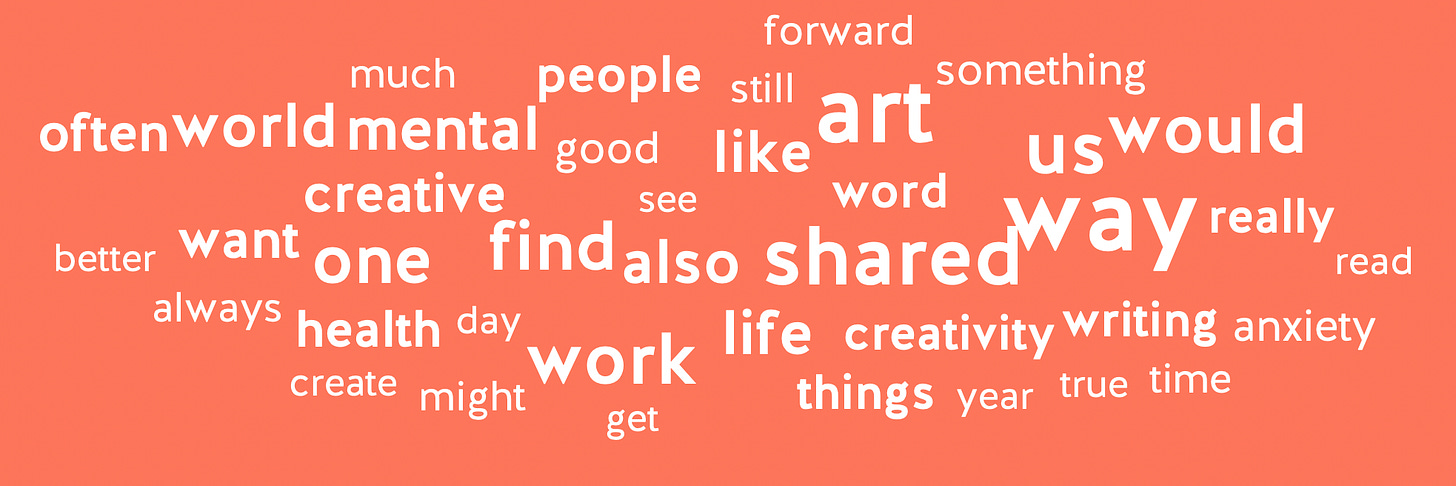
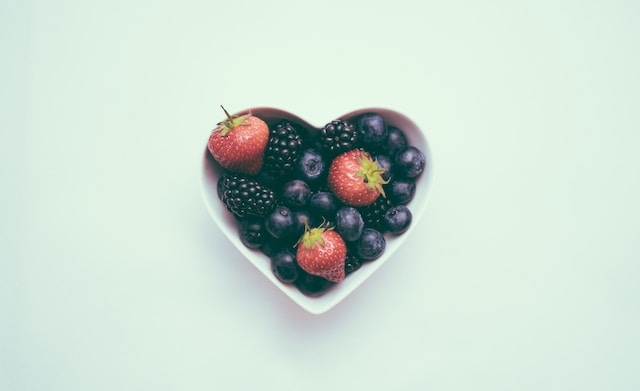
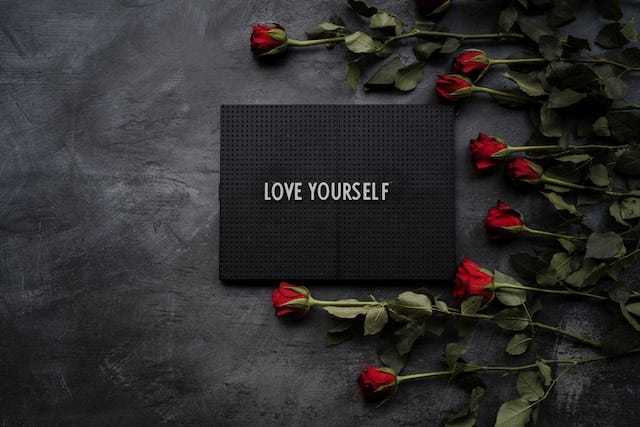

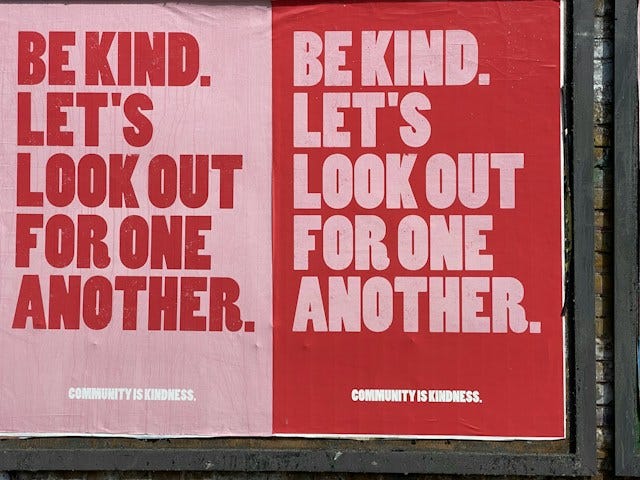

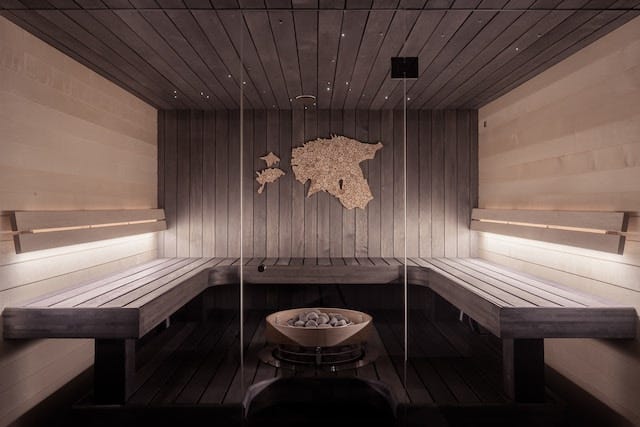
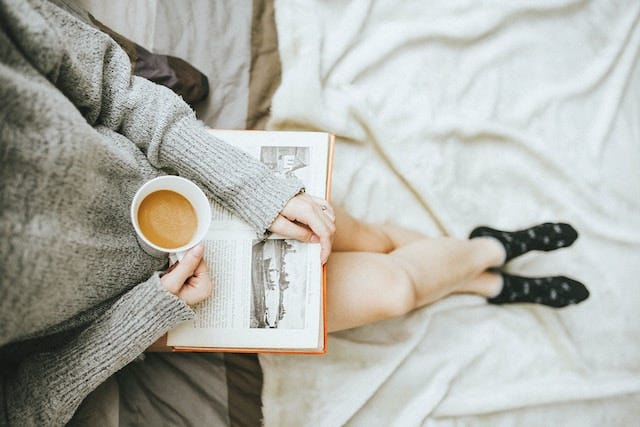

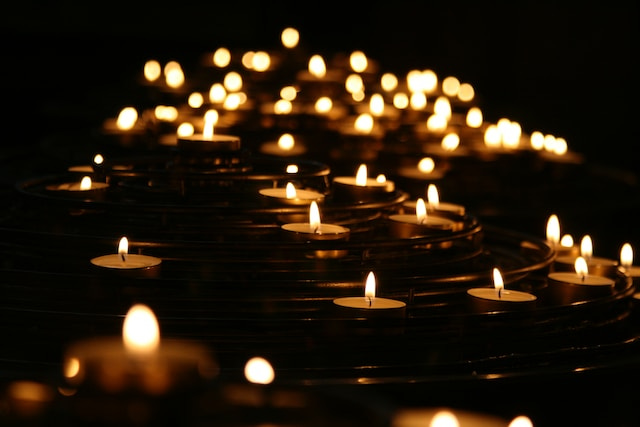

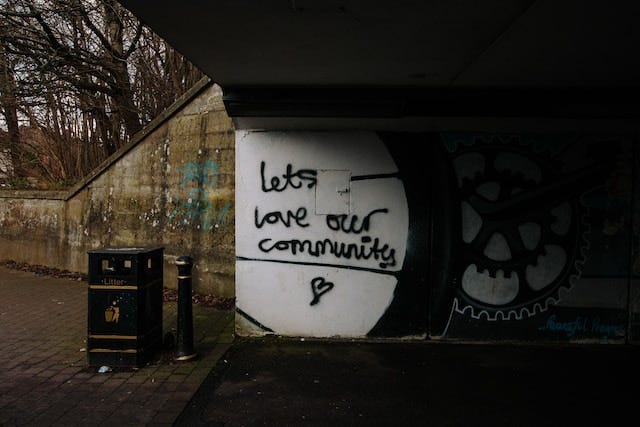


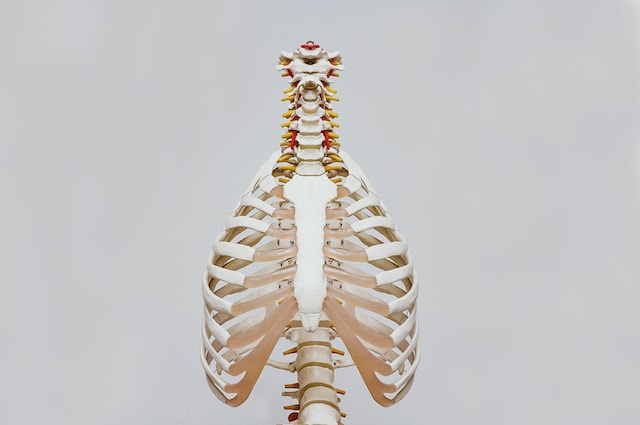




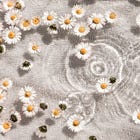

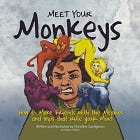
These are incredible posts I have no idea how you’re able to read/write so much... and I THANK YOU for including me in your link love again! You are wonderful -- happy new year!
Thanks so much for the mention!